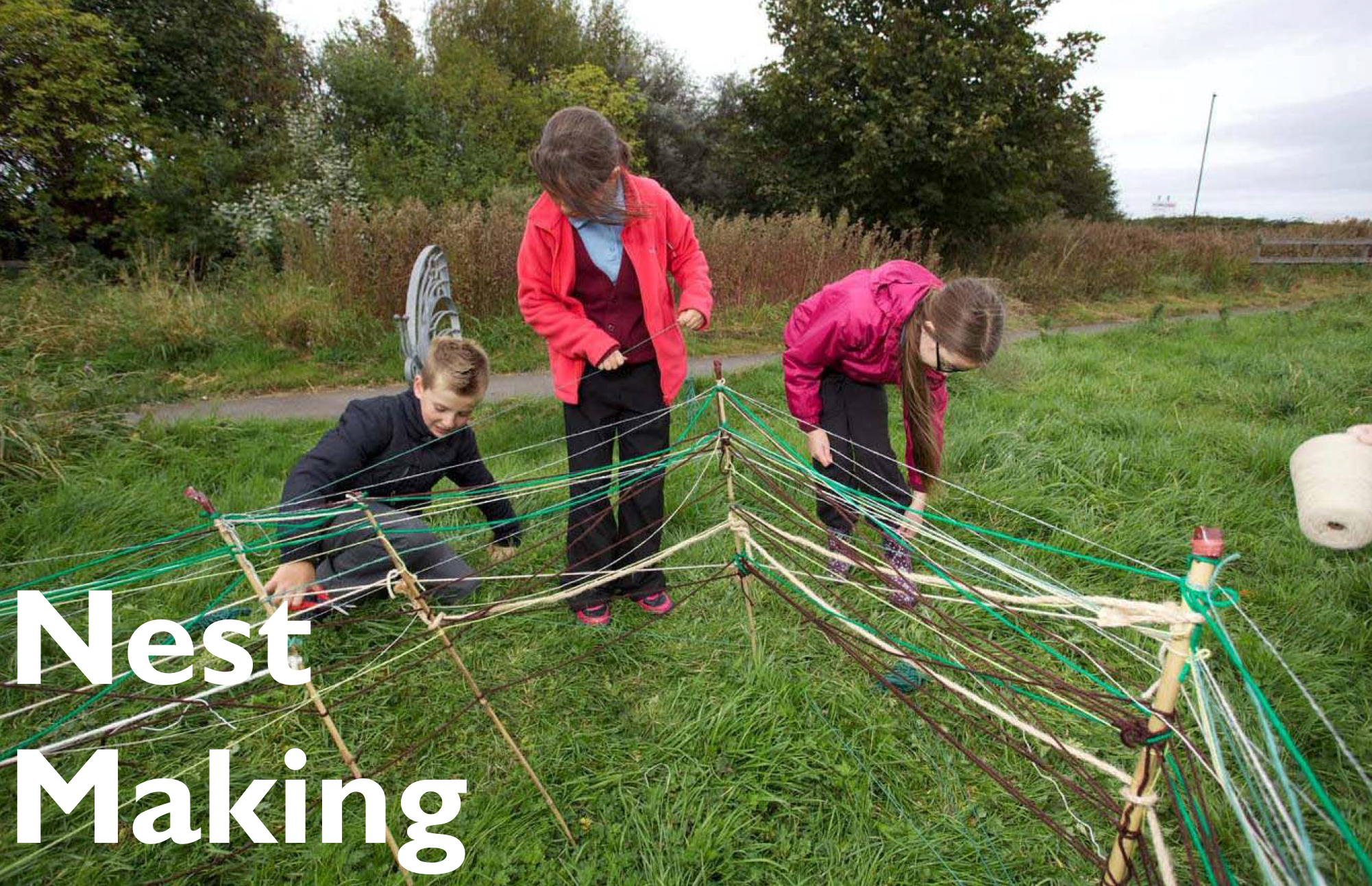In this activity, participants learn about animal nests and shelters then work together in groups to create large, nest-inspired sculptures. In doing so, they will build their knowledge of the animal world and practical and teamworking skills.
The Activity
Please note, this activity requires an introductory talk about nests/ burrows/ animal homes in the wild, for which Artists/ Teachers/ Leaders may want to source relevant images and information from eg the internet. Where it is possible to show real examples of nests, particularly in the specific wildlife site under consideration (or of relevant species), this is hugely helpful.
Artform/Type of Activity
- Sculpture/ 3D
Objectives/Outcomes
- To develop understanding of different habitats, nests, life cycles etc.
- To develop 3D/ sculptural/ engineering skills
- To explore materials/ construction/ vocabulary
- To think about art in the landscape
- To plan and work together in groups
Materials Required
- Lots of bamboo canes
- Wool – different colours
- Cloth (hessian, sacking and natural fibres work best)
- Scraps of soft fabrics (for nest ‘lining’)
- Masking tape
- String
- Cable ties
- Pipe cleaners
- Natural objects for decoration/ camouflage – pine cones/ feathers/ twigs etc – these may be collected on site and/or sourced beforehand
- Scissors/ knives – to be handled appropriately
- Camera
Space Requirements
The preparatory talk can be done anywhere suitable.
The activity is to be done outside.
Activity Instructions
- (Prior to workshop): introductory talk introducing habitats, homes and nests as outlined above; their different situations (ie underground, in trees etc); whether they are lived in by one animal or several/ a family/ a pack living connectedly; what different materials are they constructed from (like twigs, grass, hair, fur, wool, string, grasses etc); and how are these materials sourced – for example, birds usually work in pairs to hunt out the materials to make their nests. How do animals get in and out of their homes? Are they weatherproof? What happens when it rains, and so on.
- On site: divide the participants into groups or teams. Each group must decide what kind of structure they would like to build/ what kind of creature they might be housing. It may be desirable for the Artist/ Teacher/ Leader to allocate roles and responsibilities. Younger participants are likely to need the support of an adult.
- Artist/ Teacher/ Leader to outline basics of construction – the different materials, means of attaching/ securing, use of bamboo canes as frame, achievable size etc.
- Groups select initial materials; bamboo canes can be stuck in the ground – this will give stability and will also govern eventual size; it may be possible to incorporate existing features such as stones, posts, branches, walls etc into the structures.
- Groups start to construct the frame by pushing upright canes into the ground, and then attaching additional more robust materials (eg bamboo canes) together with cable ties, tape, pipe cleaners, string etc.
- Once the frame has been made, groups then start to wrap wool around the frame or tie on sacking, weave strips of material in and out, or weave twigs and foliage.
- Then groups can add additional colour and texture to the nest for camouflage/ decoration with lengths of wool being woven/ wrapped around the frame, putting in a cloth floor, putting in soft materials for comfort, decorating the nest with the natural objects.
- Once the nests are finished, take plenty of photographs, as the nests must then be disassembled and materials taken back to school/ workroom. Additionally, photographs can be taken periodically throughout construction to show development etc.
- Later, the photographs can be used to stimulate creative writing and further visual arts activities including digital arts and time lapse photography – the process, the materials, the imaginary inhabitants, how they live/ eat/ hunt/ shelter from the rain or from hunters, how many of them live in the nest, when do they feel safe, how well are they hidden, is there an emergency exit etc.
Curricular Links
Links to Art, Design and Technology through: materials, design, construction
Links to Science through: design, engineering, construction; species identification, habitats
Links to English through: vocabulary, sequence, description
This resource was designed as part of the Green TV project.
PDF Work Sheet
See our A to Z of creative activity resources here.
Funded By
The creation of this resource was made possible by funding from the Heritage Lottery Fund.

